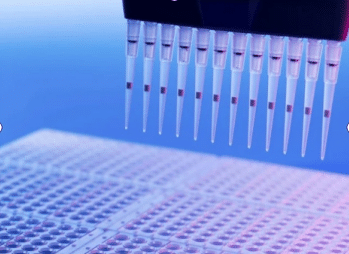
Drug metabolism and pharmacokinetics (DMPK) is an important scientific topic in drug design that studies how a medication is absorbed, distributed, metabolized, and removed by the body. Its findings help determine the efficacy and safety of novel medication candidates. The DMPK technique aids researchers in determining the best dosage, predicting interactions with other medicines, and assessing the drug’s potential therapeutic advantages. A thorough understanding of DMPK is required to design medications that fulfill regulatory requirements while also providing long-term benefits to patients.
What Does DMPK Mean in Pharmacology?
Drug metabolism and pharmacokinetics, or DMPK, is the study of drug behavior in the body. It investigates the absorption, distribution, metabolism, and excretion (ADME) of pharmacological substances. DMPK aims to forecast the drug’s pharmacological activity, improve its formulation, and prevent probable toxicity. In pharmacology, this field provides critical data for drug discovery and development. Understanding how the medicine interacts with different enzymes and receptors in the body allows researchers to predict its efficacy, side effects, and overall safety profile. DMPK is critical for creating medications with the intended therapeutic benefits while reducing side effects. This scientific field ensures that medications are both safe for patients and effective in treating certain ailments.
Why DMPK is Crucial in Drug Discovery?
Predicting Drug Absorption and Distribution
DMPK studies are important for predicting how a medicine will be absorbed and distributed throughout the body. Understanding a drug’s bioavailability allows scientists to predict whether it will reach its target tissues at therapeutic amounts. These forecasts rely heavily on key parameters like solubility and permeability. Drugs with limited absorption may not give effective treatment, whereas those that distribute unevenly may cause adverse effects or an insufficient therapeutic response. DMPK modeling aids in drug formulation refinement to improve absorption and distribution, ensuring that the medication works as intended across several tissues and organs.
Enhancing Drug Safety and Efficacy
DMPK is crucial for verifying medication safety and efficacy since it assesses how a medicine behaves in the body over time. This involves evaluating the drug’s interactions with enzymes, receptors, and proteins, as well as its metabolism and elimination. Understanding these parameters allows researchers to forecast probable side effects, toxicity, and undesirable responses. Early DMPK testing aids in the identification of compounds with promising therapeutic benefits while lowering the risk of adverse side effects. This allows drug developers to choose the most promising medication candidates for clinical trials, improving the likelihood of creating safer, more effective medicines.
Minimizing Late-Stage Clinical Failures
DMPK contributes significantly to reducing late-stage clinical failures by offering early insights into a drug’s activity in the human body. Without thorough DMPK testing, medications may fail in subsequent clinical trial phases owing to unexpected concerns such as poor absorption, toxicity, or effectiveness. Early-stage DMPK screening assists researchers in identifying such issues, allowing them to adjust the drug’s formulation or structure prior to moving on with more expensive clinical studies. By including DMPK evaluations early on, the probability of a medicine failing in later stages is minimized, saving time, money, and resources in drug development.
How is DMPK Evaluated in Drug Development?
Comparing In Vitro and In Vivo Testing Methods
In vitro testing approaches, which use cellular or tissue-based models, provide quick, controlled evaluations of drug absorption, metabolism, and transport. These approaches are less costly and require fewer resources, making them appropriate for early-stage testing. However, they cannot fully simulate the intricacy of the human body. In contrast, in vivo testing procedures employ living creatures to provide more accurate data on how a medicine works in the body. These investigations are critical for understanding a drug’s pharmacokinetics throughout the entire organism, despite their higher cost, time commitment, and ethical challenges. Combining the two procedures improves DMPK assessment.

Computational Modeling in DMPK Evaluation
Computational modeling for DMPK assessment is becoming increasingly significant in drug development. Computational models, which simulate drug absorption, distribution, metabolism, and disposal, give researchers significant insights into how a medication functions within the body without the need for lengthy animal testing. These models combine data from in vitro and in vivo investigations and employ algorithms to predict drug action in a variety of settings. Computational modeling is very beneficial for optimizing medication candidates early in the process, which reduces costs and accelerates development. It offers more exact forecasts of medication efficacy, safety, and possible interactions, which guide further research and refinement.
Conclusion
DMPK is a cornerstone of drug development, giving critical information on how medicines interact with the body. It enables researchers to anticipate absorption, distribution, metabolism, and excretion, ensuring that medications are both safe and effective. By including DMPK testing early in the development process, the chance of late-stage clinical failures is reduced, eventually saving time and resources. The use of in vitro, in vivo, and computational approaches guarantees that DMPK assessments are complete and accurate, resulting in superior treatment outcomes. Ultimately, dmpk plays a crucial role in advancing drug development and improving patient care.




